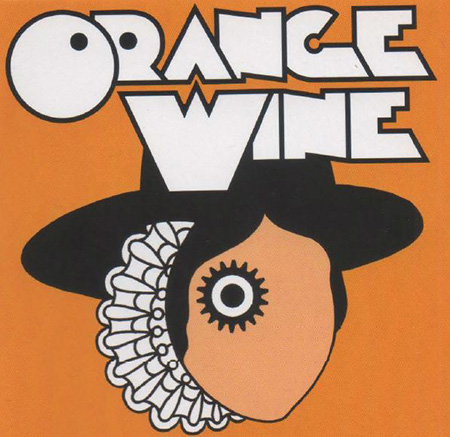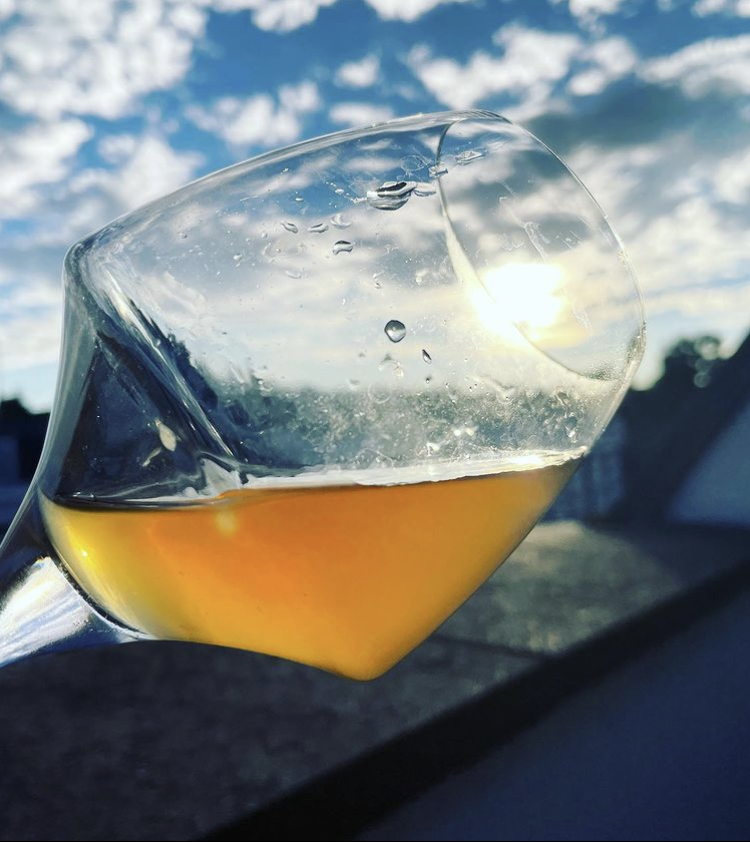Orange is a hottest-coolest colour in the wine spectrum. The colour denotes that grapes (which we might normally associate with white wines) have been macerated on their skins – as if they were red wines. During the period of maceration, various components are naturally extracted, such as colour, tannin and other phenolic compounds.
The degree of colour depends on the grape variety, the nature of the vintage, the ripeness at the time of harvesting, and the winemaking – the length of maceration, the quality of extraction, whether the wines are made oxidatively or anaerobically, and so forth. Skin contact wines may be golden-yellow, pinkish-grey, orange, amber or even ochre.
To make a meritorious skin-contact wine you need something worth extracting from the skins. Good farming, preferably organic or biodynamic, is a prerequisite, yielding excellent grape maturity (when the grape skins have acquired colour and phenolic substance), but also balance within the grapes themselves. The extraction itself should be subtle and harmonious, the vigneron judging whether to use the grape stems, how many days to macerate, whether to rack the wine – and so forth.
The degree of colour depends on the grape variety, the nature of the vintage, the ripeness at the time of harvesting, and the winemaking.
Skin contact wines are made all over the world now. We associate them primarily with Georgia and its qvevri wines, wherein whole bunches of grapes – skins and stems included, are placed in large terracotta pots buried in the ground where they remain often for up to six months. Growers in Italy, Slovenia and Croatia have been making world-class skin contact wines for many years and the demonstrable quality of their efforts has persuaded a generation of growers elsewhere to try their hand at “skinny-dipping”.

The wines themselves are fascinating. Many of them have an al dente quality, texturally-speaking; often they are bitter and slightly astringent. Fruit character tends towards the fleshy, orchard-fruit end of the spectrum (they almost invariably undergo a full malolactic conversion), offset by baked spice notes (usually the result of extended lees-contact), hints at grilled vegetables, earthiness, wild herbs. Sometimes the wines have a gentle oxidative quality (they are conceived and mature in presence of oxygen which intensifies the “orange” hues). More modern winemaking approaches have appeared which seek to extract a bit of colour, some texture but no tannin. Carbonic maceration in sealed tanks or a short cool pre-fermentation maceration or slow press cycles are a means to get a little extra out of the grapes.
In addition, more winemakers are using partial skin contact, splitting the harvest and taking one part to macerate (for say three weeks), the balance being straight-press juice, with the elements combined at any one of a number of stages. Of course, red wines can be made in the same way. This hybrid approach is part of the constant search for balance between freshness and texture.
Many of them have an al dente quality, texturally-speaking; often they are bitter and slightly astringent. Fruit character tends towards the fleshy, orchard-fruit end of the spectrum, offset by baked spice notes, hints at grilled vegetables, earthiness, wild herbs.
So what about the nomenclature of these wines? Well, red, white and rosé feature as casual wine terms, yet the colour spectrum of those wines is also very wide indeed. There are, for example, reds that are practically rosés and rosés that could easily be mistaken for reds, and orange wines that are pink and ones that verge on the red, whites that are watery-pale to burnished gold. Most orange wines are no more orange than any white wine is actually white, but the catch-all colour has become a useful shorthand for any wine that is made with a greater or lesser degree of skin maceration of grapes that one might normally associate with so-called white wines. The colour codes are thus essentially meaningless, simply shorthand to denote a very broad style of winemaking. Customers in restaurants who request an orange wine might be disappointed with some of the paler versions they might be served, but to understand that wines are not so simple to define, that some skin contact wines are closer in spirit to whites whereas others possess the structure and tannin of reds, is an education and an encouragement not to judge a wine by its colour-name.



Very interesting article that all “wanabee orange drinkers” should read. I often explain that orange/amber wine is just a name – it’s more of an technique; macerated green grapes. Bravo!